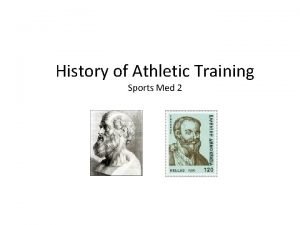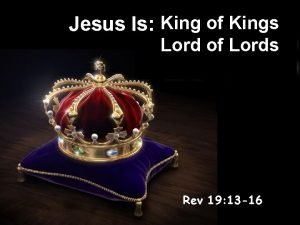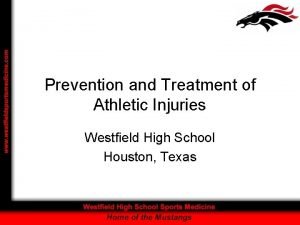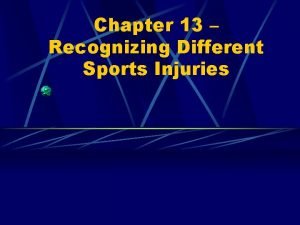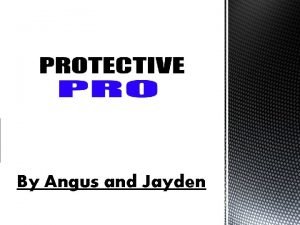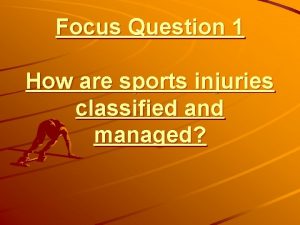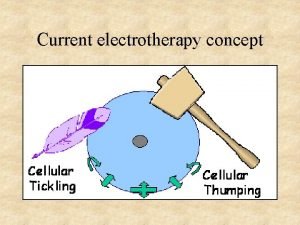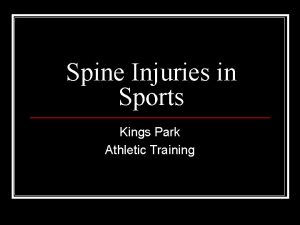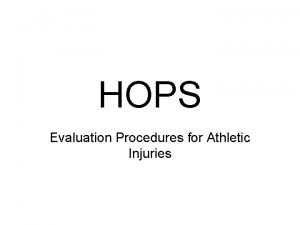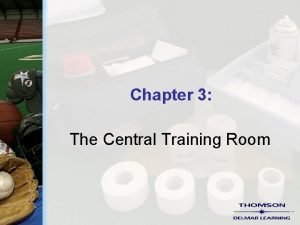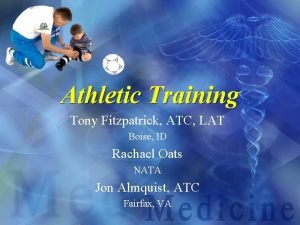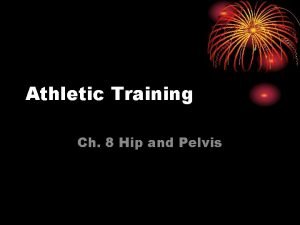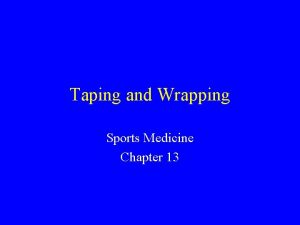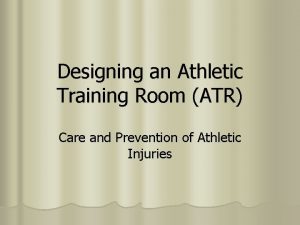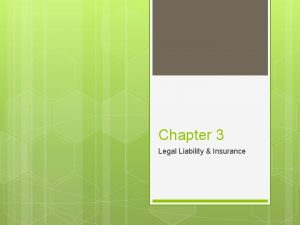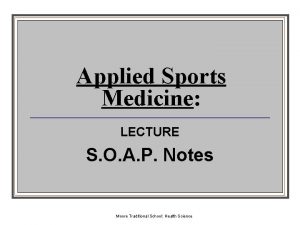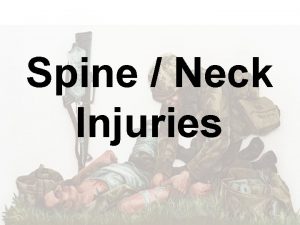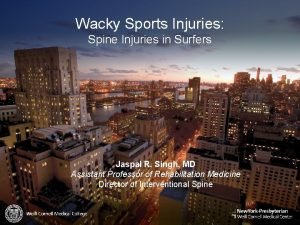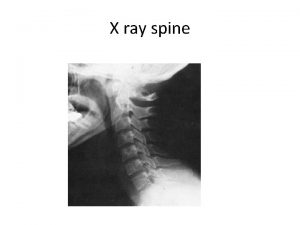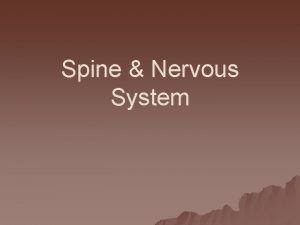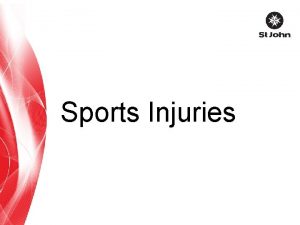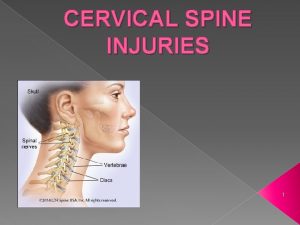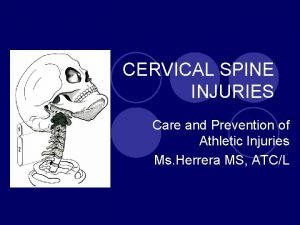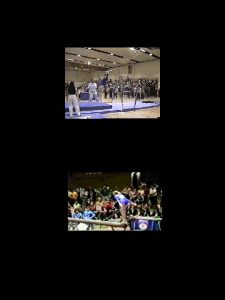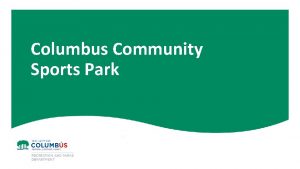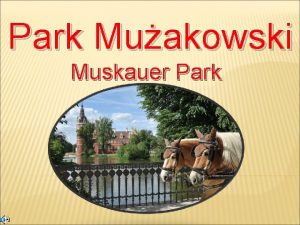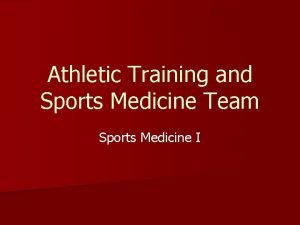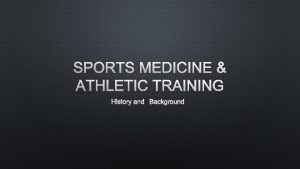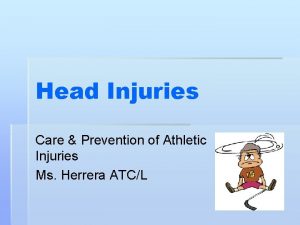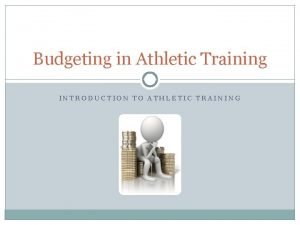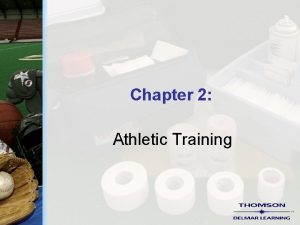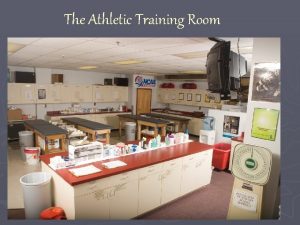Spine Injuries in Sports Kings Park Athletic Training






















- Slides: 22

Spine Injuries in Sports Kings Park Athletic Training

Shape of the Human Spine n The human spinal column is formed in the shape of an “S” which enables the spine to absorb shock from outside forces.

Cervical Spine Anatomy n The cervical spine consists of 7 vertebrae that are columned on top of one another.

Cervical Spine Facts n n The 7 cervical vertebrae connect the head to the thorax. The cervical spine attaches a 15 lb. object (head) to an immovable mass (thorax). The vertebral bodies of the cervical spine are the smallest, the canal of the spine is the largest here.

Anatomy of a vertebrae n 1= Vertebral body 2= Vertebral foramen 3= Spinous process 4= Pedicle 5= Superior articular process 6= Transverse process 7= Lamina

Protection of Spinal Column and Spinal Cord The spinal cord passes through the vertebral foramen (spinal canal) of each vertebra and is protected by the vertebral body. n The cervical spine is supported by muscular and ligamentous structures. n

Intervertebral disks n n n Shock absorbers of the spine. Annulus Fibrous: strong tire-like structure, encloses nucleus pulposus. Nucleus Pulposus: gel-like structure made of mostly water, provides cushion.

Herniated/Ruptured Disk n If the herniated disc presses on a nerve root, it may cause pain, numbness, or tingling.

Mechanism of Disk Injury Forward flexion of the spine (bending forward). n Lifting heavy weights presses one vertebrae against another, increasing the pressure on the disk. n Increasing pressure on the disk “squeezing” the disk. Coughing, sneezing. n

How is the diagnosis of a herniated disk made? n n The diagnosis of a herniated disc can be made by physical examination through testing sensation, muscle strength, and reflexes. MRI pictures determine the final diagnosis.

Axial Loading n n Axial loading occurs when the athlete lowers their head into slight flexion which turns the previously curved spine into a straight spine. Then a load is placed on top of the head.

When do you spineboard an athlete? n n Athlete is unconscious. The athlete presents with signs or symptoms of a spinal cord injury. 1. 2. 3. Numbness and tingling in extremities. Lack of movement or sensation in extremities. Pain or deformity over vertebrae.

Preparing the Athlete to be Spine Boarded n n n Place a cervical collar on the athlete. If a facemask is present remove the facemask from the helmet. Make sure straps are in position. n Keep shoulder pads on, as they provide proper spinal alignment along with the helmet.

Log Roll Technique (spine boarding) n n Person at the head is in charge of the maneuver and gives the cadence for the roll, holds in-line traction. Ideally there are 2 people above waist and below the waist of the victim. n Victim is rolled to the side, board is placed under the victim.

Spinal Ligaments n n Give support and structure to the spinal column. May become injured from a sudden, forceful movement, or lifting a heavy object, among other causes.

Low Back Muscles

Lumbar Sprains and Strains n n n Most common causes of low back pain. A low back muscle strain occurs when the muscle fibers are abnormally stretched or torn. A lumbar sprain occurs when the ligaments, the tough bands of tissue that hold bones together, are torn from their attachments. Both injuries will show similar symptoms. Referred to as "musculoligamentous injuries" of the lumbar spine. The treatment and prognosis for both back strains and sprains is the same.

Compression Fractures n n A compression fracture occurs when the normal vertebral body of the spine is squished, or compressed, to a smaller height. Mechanism: falling on rear end, or a heavy vertical load is placed on the spine.

Who needs spinal fusion? If the cause of your back pain seems to be motion between segments of your vertebrae. n Spinal fusion may be a way to prevent motion and stop the pain. n Spinal fusion involves permanently connecting — or "welding" — two or more vertebrae together. n

How is the spine fused? To fuse the spine, your doctor needs small pieces of extra bone to fill the space between two vertebrae. n Bone may come from your own body (pelvic bone) or it may come from another person (allograft bone). n Doctors also use wires, rods, screws, metal cages or plates to fuse the vertebrae. n

Lateral and posterior spinal fusion views

After surgery The areas of your spine adjacent to the fusion will bear more stress. This makes those areas more likely to experience future wear and tear. n Don't expect spinal fusion to eliminate your pain — just to improve it. n
 Chapter 28 head and spine injuries
Chapter 28 head and spine injuries Chapter 21 caring for head and spine injuries
Chapter 21 caring for head and spine injuries Herodicus of megara
Herodicus of megara King of kings and lord of lords
King of kings and lord of lords Westfield sports injuries
Westfield sports injuries Chapter 11 assessment and evaluation of sports injuries
Chapter 11 assessment and evaluation of sports injuries Chapter 13 worksheet recognizing different sports injuries
Chapter 13 worksheet recognizing different sports injuries Sports injuries angus, on
Sports injuries angus, on How are sports injuries classified and managed
How are sports injuries classified and managed William stanish
William stanish Who is in charge when spine boarding an athlete and why
Who is in charge when spine boarding an athlete and why H.o.p.s. athletic training
H.o.p.s. athletic training Hops evaluation format
Hops evaluation format Athletic training room design
Athletic training room design Athletic training budget example
Athletic training budget example Boise athletic training
Boise athletic training Moi athletic training
Moi athletic training What is the importance of taping and wrapping?
What is the importance of taping and wrapping? Atr room
Atr room Current trends in athletic training
Current trends in athletic training Example of malfeasance in athletic training
Example of malfeasance in athletic training Healthcare administration in athletic training
Healthcare administration in athletic training Athletic training soap note example
Athletic training soap note example


